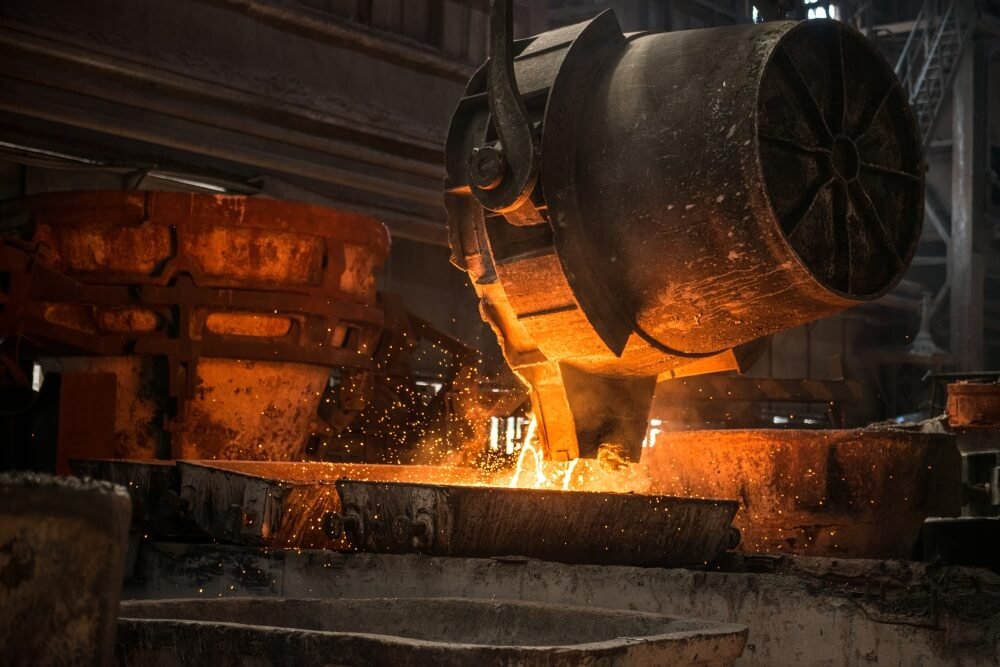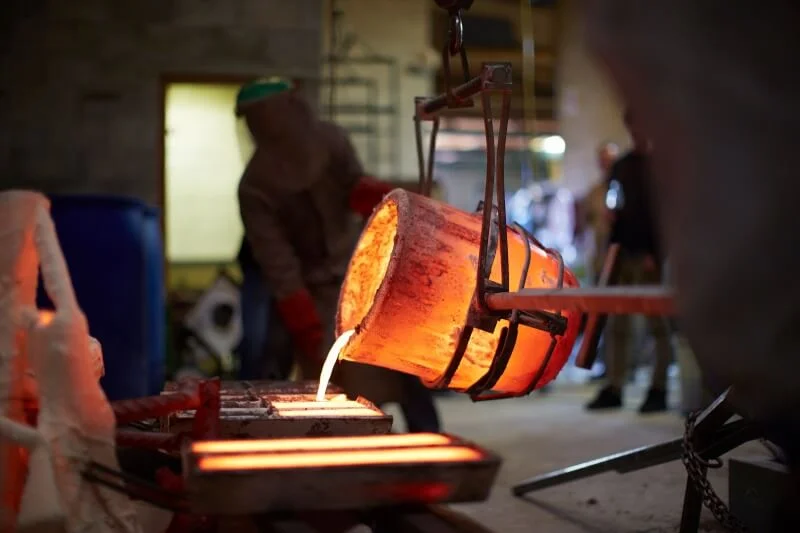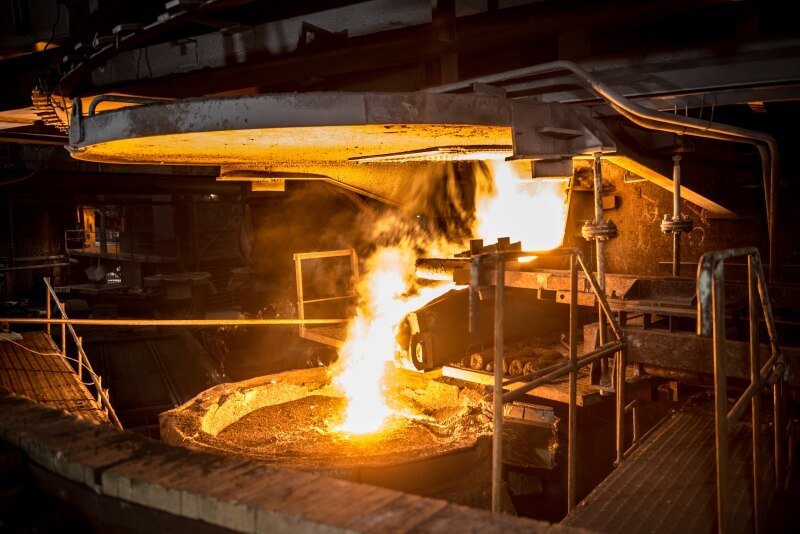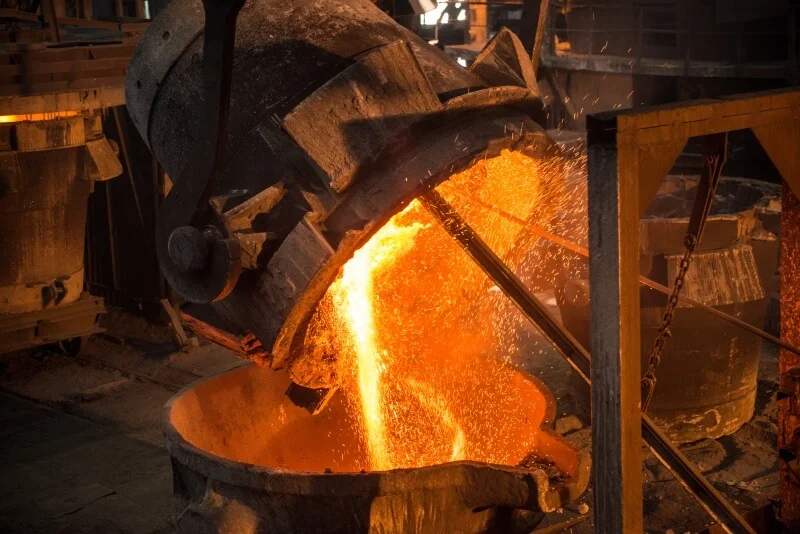You’re diving into casting in aluminum, excited by the potential of DIY projects, but most guides fail to address the serious hidden dangers. A simple mistake—like overheating the melt—can trigger a dangerous aluminum fire that destroys your crucible, damages your furnace, and endangers your safety. This overlooked risk is rarely mentioned in tutorials. That’s why this article pulls back the curtain, sharing firsthand experience of a near-disaster to expose the real-world hazards of casting in aluminum and to equip you with the critical safety knowledge needed to protect both yourself and your workshop.

1. First Steps in Casting in Aluminum
What mistakes are common at first?
Here’s the deal: Many beginners make critical errors by using improper materials that can fail dangerously. Think about it: Your first crucible might be a section of galvanized pipe, which is an unsafe choice for holding molten metal. These early mistakes often stem from a lack of knowledge about the extreme conditions involved.
Why is regular concrete dangerous?
What does this mean for you? Using ordinary concrete for your furnace is a recipe for disaster because it contains trapped water. When heated, this water turns to steam and expands violently, causing the concrete to explode and send hot fragments flying. This phenomenon, known as spalling, poses a significant and avoidable risk.
- Concrete contains chemically bound water.
- High heat turns this water into high-pressure steam.
- The pressure buildup causes explosive failure.
Key Takeaway: Never use standard concrete for furnace construction; its trapped moisture can cause a dangerous steam explosion when heated.
| Material | Risk | Outcome |
|---|---|---|
| Galvanized Steel | Unsafe at high temps | Potential failure, toxic fumes |
| Regular Concrete | Trapped Water Content | Violent steam explosion (Spalling) |
This table illustrates why material choice is critical from your very first build.
2. Gear for Safe Casting in Aluminum
What is the minimum required PPE?
Think about it: Your personal protective equipment (PPE) is the only barrier between you and a severe injury. You absolutely must wear gear designed to withstand intense radiant heat and potential splashes of molten metal. Skimping on PPE is a gamble you can’t afford to take.
Why aren’t standard gloves enough?
Here’s the deal: Standard welding gloves are not designed for the radiant heat of a furnace and can absorb it too quickly. By the time you realize they are dangerously hot, you could already be burned and unable to remove them fast enough. This is why specialized, reflective gloves are non-negotiable for this work.
- Radiant heat penetrates standard gloves rapidly.
- Gloves can become dangerously hot before you feel pain.
- Firsthand experience shows this leads to serious burns.
Key Takeaway: Standard welding gloves are insufficient; invest in aluminized gloves designed to reflect radiant heat and prevent severe burns.
| Gear | Function | Why It’s Essential |
|---|---|---|
| Polycarbonate Shield | Face & Eye Protection | Resists high heat and impacts. |
| Leather Jacket/Boots | Body Protection | Repels molten metal splashes. |
| Aluminized Gloves | Hand Protection | Reflects intense radiant heat. |
This summary highlights the non-negotiable safety gear needed for casting.
3. Furnace Design for Casting in Aluminum
What materials are better than concrete?
What does this mean for you? A homemade refractory mix using Perlite and Calcium Aluminate cement is a much safer and more effective alternative. Unlike regular cement, this mixture is designed to withstand extreme temperatures and provides excellent insulation. This ensures your furnace is both durable and efficient.
How do you cure a new furnace?
You might be wondering: How do you prepare a new refractory-lined furnace for its first real use? You must cure it by warming it up very slowly over time to safely drive off any residual moisture. Rushing this critical step can cause cracks or even a minor steam-related failure.
- Start with a small, low-temperature fire.
- Gradually increase the heat over several hours.
- This process removes moisture in a controlled manner.
Key Takeaway: Properly curing your new furnace by slowly heating it is essential to prevent cracking and ensure its structural integrity.
| Component | Material | Benefit |
|---|---|---|
| Refractory Body | Perlite & CA Cement | High-heat tolerance, insulation |
| Curing Process | Slow, controlled heat | Prevents cracks, ensures safety |
This table shows the core components of a safe, homemade furnace.
4. Fuel for Casting in Aluminum
How does a dual-fuel burner work?
Here’s the deal: A dual-fuel system offers flexibility and power by starting with a clean fuel before switching to a more potent one. You begin by warming up the furnace using LPG (propane). Once the furnace is hot, you introduce waste oil and can then turn off the gas.
What controls airflow and fuel?
Think about it: Precise control over your fuel-to-air ratio is what creates an efficient, hot, and clean burn. This is often achieved using a spa pool blower connected to a speed controller to manage airflow. The oil can be delivered via a separate system, pressurized to ensure a steady flow.
- A spa blower provides adjustable airflow.
- A speed controller allows for fine-tuning the air.
- A pressurized tank delivers a consistent oil stream.
Key Takeaway: A dual-fuel burner with adjustable airflow provides the power and control needed to reach and maintain high temperatures safely.
| System | Component | Purpose |
|---|---|---|
| Burner | LPG & Waste Oil | Starts clean, runs powerfully |
| Air Control | Spa Blower & Speed Controller | Regulates combustion temperature |
| Fuel Delivery | Pressurized Tank | Ensures consistent fuel flow |
This setup provides a robust and controllable heat source for your furnace.
5. Crucibles for Casting in Aluminum
What are unsafe crucible choices?
What does this mean for you? Using items like galvanized steel pipe for a crucible is extremely hazardous. These materials are not designed to handle the thermal stress of repeated heating and cooling with molten metal. They can fail without warning, spilling molten aluminum and creating a dangerous situation.
What are good DIY crucible options?
You might be wondering: Are there any safe and affordable DIY options for crucibles? Repurposed steel fire extinguisher cylinders have proven to be a durable and low-cost alternative. They are designed to handle pressure and their thick steel walls can withstand numerous melts before needing replacement.
- Contact a fire extinguisher certification company.
- They often have expired steel cylinders available.
- These make for tough, reliable crucibles.
Key Takeaway: Avoid makeshift crucibles from inappropriate materials; repurposed steel fire extinguishers are a proven, safer DIY option.
| Crucible Type | Risk Level | Reason |
|---|---|---|
| Galvanized Pipe | Very High | Fails under thermal stress. |
| Steel Fire Extinguisher | Low (for DIY) | Durable, thick-walled steel. |
| Clay Graphite | Very Low | Commercially made for this purpose. |
This comparison clarifies why choosing the right crucible material is vital.
6. The Risk of Casting in Aluminum
How can you increase furnace heat?
Here’s the deal: To reach higher temperatures for melting metals like brass, you need better insulation. Lining the inside of your furnace with a ceramic fiber blanket, such as Kaowool, dramatically reduces heat loss. This allows your furnace to get much hotter, much faster.
What happens when aluminum ignites?
Think about it: Most guides never mention that aluminum itself can catch fire if it gets too hot. The first sign is a change in flame color from orange to a twinkling yellow, followed by a bright white/yellow flame erupting from the furnace. This fire is incredibly intense and can shoot up a meter or more.
- The furnace flames begin to “twinkle.”
- Flames change color to a bright white/yellow.
- An intense flame fountain erupts from the crucible.
Key Takeaway: Overheating aluminum can cause it to ignite, creating an intense fire that is far more dangerous than a standard fuel fire.
| Element | Description | Implication |
|---|---|---|
| Kaowool Insulation | Ceramic Fiber Blanket | Enables much higher temperatures. |
| Aluminum Ignition | Metal catches fire | Creates a destructive, high-temp flare. |
This shows the direct link between better insulation and the increased risk of ignition.
7. Aftermath of Casting in Aluminum Fire
How long does an aluminum fire burn?
What does this mean for you? An aluminum fire is a fast and furious event. Just two to three liters of molten aluminum can be completely consumed in only two to three minutes. During this time, the fire burns with an unstoppable intensity until all the fuel (the aluminum) is gone.
What damage can it cause?
You might be wondering: What kind of destruction does an aluminum fire leave behind? It is powerful enough to completely destroy a steel crucible, leaving behind only a spongy mess. It can also melt or burn through the Kaowool lining and damage the refractory base of your furnace.
- Complete destruction of the steel crucible.
- Damage to the furnace’s Kaowool insulation.
- Potential for burning through the refractory base.
Key Takeaway: An aluminum fire is incredibly destructive, capable of consuming liters of metal and destroying your crucible and furnace in minutes.
| Event | Duration | Damage Caused |
|---|---|---|
| Aluminum Fire | 2-3 minutes | Complete consumption of molten aluminum. |
| Aftermath | N/A | Destroyed crucible, damaged furnace lining. |
This highlights the speed and destructive power of an aluminum fire.
8. Learning from Casting in Aluminum Errors
Why did the aluminum catch fire?
Here’s the deal: The root cause of the aluminum ignition was surprisingly simple—the melt was just way too hot. Improved insulation allowed the furnace to reach temperatures far beyond aluminum’s melting point. This pushed it to its ignition temperature, a critical danger that is rarely discussed.
What does ignited aluminum look like?
Think about it: After the intense fire subsides, the aftermath is telling. All that remains of the crucible and the molten metal inside is a single, spongy mess. This fused remnant is a clear indicator that the temperature was high enough to not just melt, but to ignite and consume the aluminum itself.
- The crucible and aluminum are fused together.
- The remaining material has a spongy texture.
- It’s a stark visual of extreme heat.
Key Takeaway: The primary cause of aluminum ignition is excessive heat; recognizing the visual evidence helps in understanding and preventing it.
| Cause | Effect | Evidence |
|---|---|---|
| Excessive Heat | Aluminum Ignition | An intense, self-sustaining fire. |
| Post-Fire | Destruction | A spongy, fused mass of metal. |
This analysis links the cause, effect, and evidence of a catastrophic melt.
9. Key Lessons for Casting in Aluminum
What are the two most vital rules?
What does this mean for you? After experiencing the dangers firsthand, two rules stand out as absolutely essential for your safety. First, safety equipment is your best friend and is non-negotiable. Second, volatile liquids are your enemy and must be handled with extreme caution at all times.
How should you treat fuels?
You might be wondering: How careful do you really need to be with fuels? Treat all volatile substances—including oil, LPG, and methylated spirits—with the utmost respect. A small leak or spill can quickly turn into a massive fireball, so proper storage, handling, and vigilance are critical.
- Always store fuels away from the furnace.
- Regularly check hoses and connections for leaks.
- Never become complacent around flammable materials.
Key Takeaway: Prioritizing safety gear and treating all volatile fuels with extreme caution are the two most important principles for safe casting.
| Principle | Action | Rationale |
|---|---|---|
| Safety First | Always wear full PPE. | It’s your only defense against accidents. |
| Respect Fuels | Handle with extreme care. | Prevents catastrophic fireballs. |
These two core rules should govern all your casting activities.
10. The Reality of Casting in Aluminum
Why isn’t this risk discussed more?
Here’s the deal: There is a significant gap in online tutorials and guides regarding the risk of aluminum ignition. Most resources focus on the “how-to” without adequately covering the “what-if.” This lack of shared knowledge leaves many beginners unaware of one of the most severe dangers of the craft.
What should every beginner know?
Think about it: Even with thorough research and preparation, unexpected and dangerous events can still occur. You must understand that you are working with powerful forces. The key is to build your setup with safety as the top priority and never underestimate the potential for things to go wrong.
- Research is important, but not foolproof.
- Unexpected dangers can and do happen.
- Always prioritize safety over speed or convenience.
Key Takeaway: The risk of aluminum ignition is real and under-reported; beginners must approach casting with caution, aware that not all dangers are covered in tutorials.
| Topic | Common Portrayal | The Reality |
|---|---|---|
| Aluminum Casting | Fun, creative DIY projects. | Involves serious, unspoken dangers. |
| Online Guides | Focus on process. | Often omit critical safety warnings. |
This table contrasts the common perception of casting with its harsh realities.
Conclusion
This article has illuminated the critical, often-overlooked danger of aluminum ignition during casting. By understanding this risk and the importance of proper furnace materials and PPE, you are now better equipped to approach this craft with the caution it demands. For a deeper look into safe workshop practices, consult our comprehensive guide on furnace construction and safety protocols; don’t leave your safety to chance. We are committed to fostering a community of informed and safe makers by sharing transparent, experience-based knowledge that empowers you to create confidently and responsibly.
FAQ
Can I use a regular steel cooking pot as a crucible? No, this is extremely dangerous. Cooking pots are made from thin steel that is not designed to withstand the thermal shock of molten metal and will fail, spilling molten aluminum.
Can I melt painted or coated aluminum scrap? Yes, but you must do so with extreme ventilation, preferably outdoors and away from anything flammable. Burning coatings release toxic fumes that are hazardous to inhale.
Can I build my furnace with normal bricks and cement? No, using standard concrete or non-refractory bricks is a recipe for a steam explosion. You must use proper refractory materials designed to handle high temperatures safely.
Can I add water to cool my casting down faster? Absolutely not. This is one of the most hazardous things you can do, as it will cause a violent steam explosion that can throw molten metal everywhere.
Can I do aluminum casting in my garage if the door is open? It is strongly advised against. Casting should always be done outdoors on a non-flammable surface like dirt or sand, with plenty of ventilation and clear space around you.




